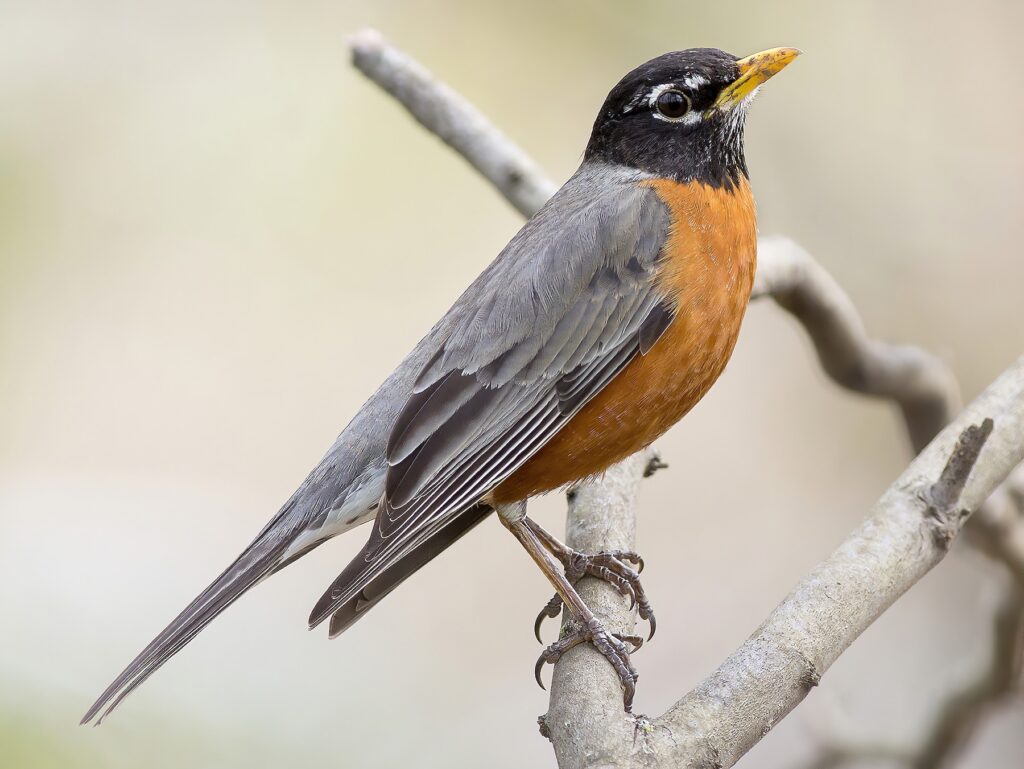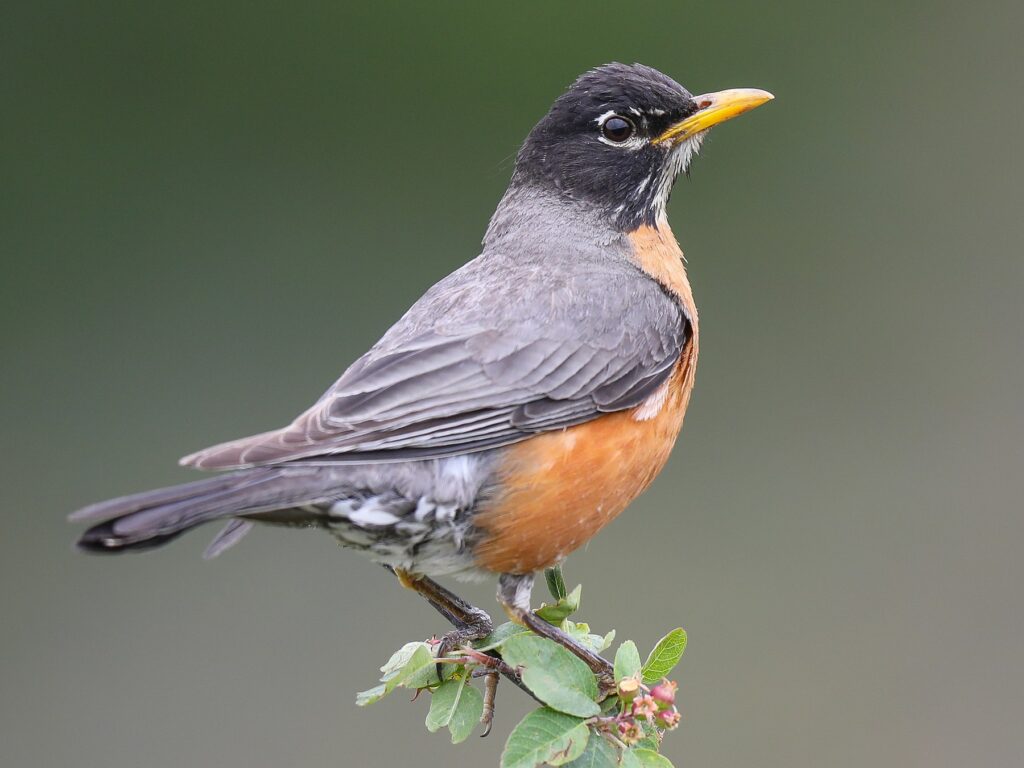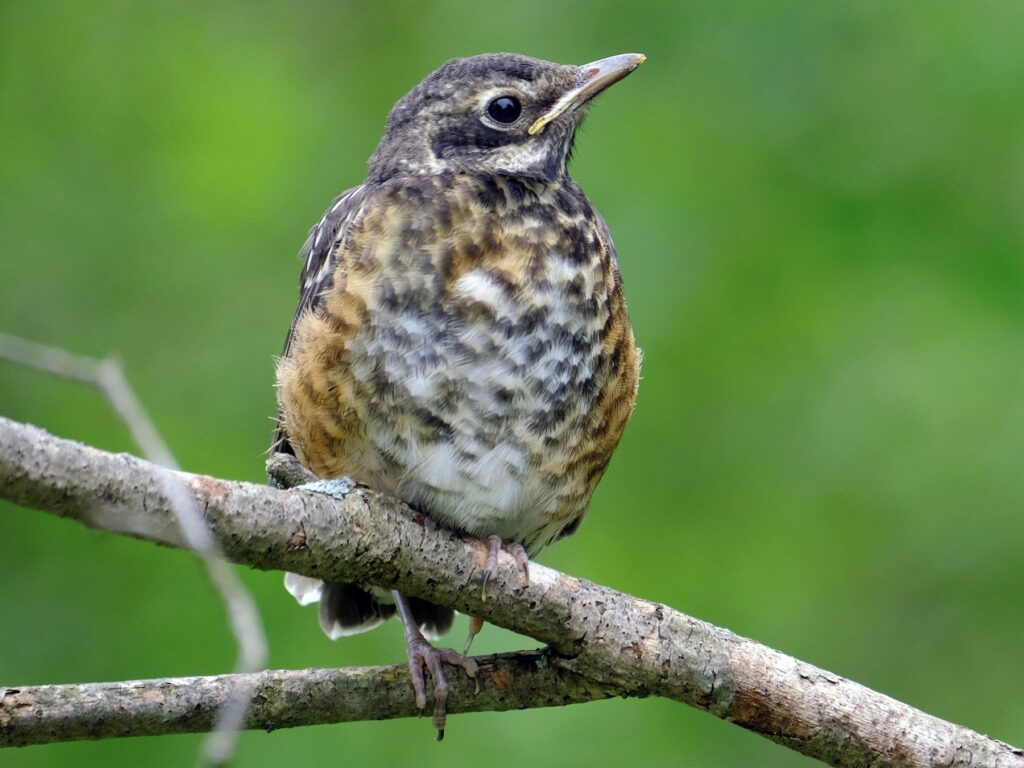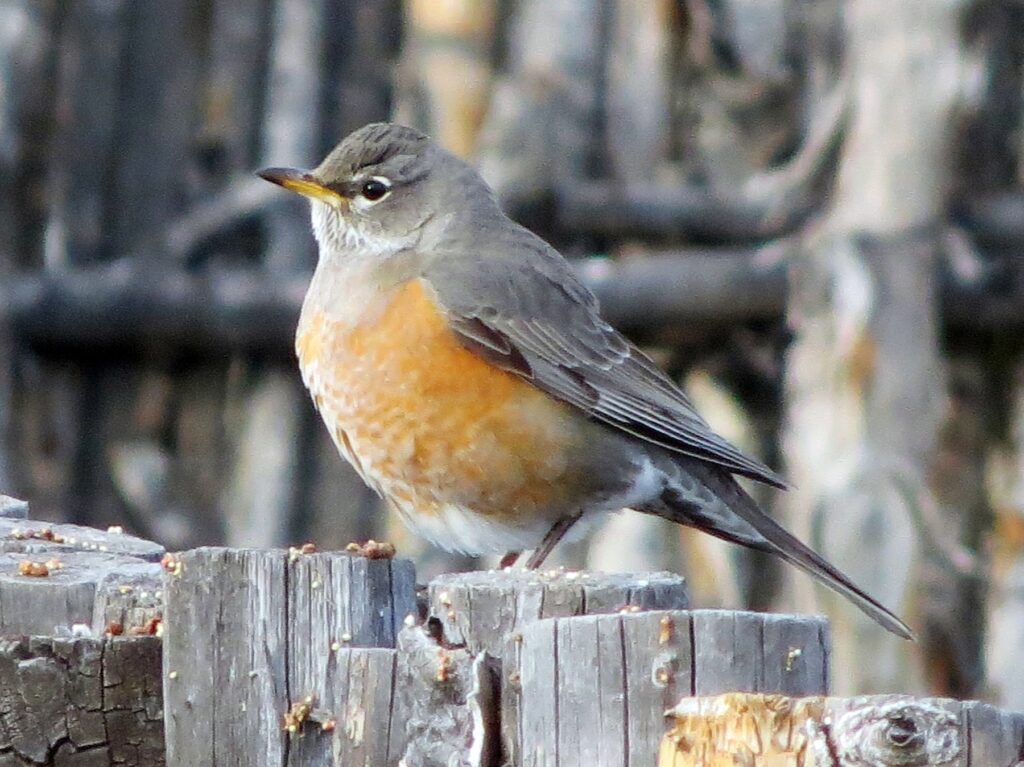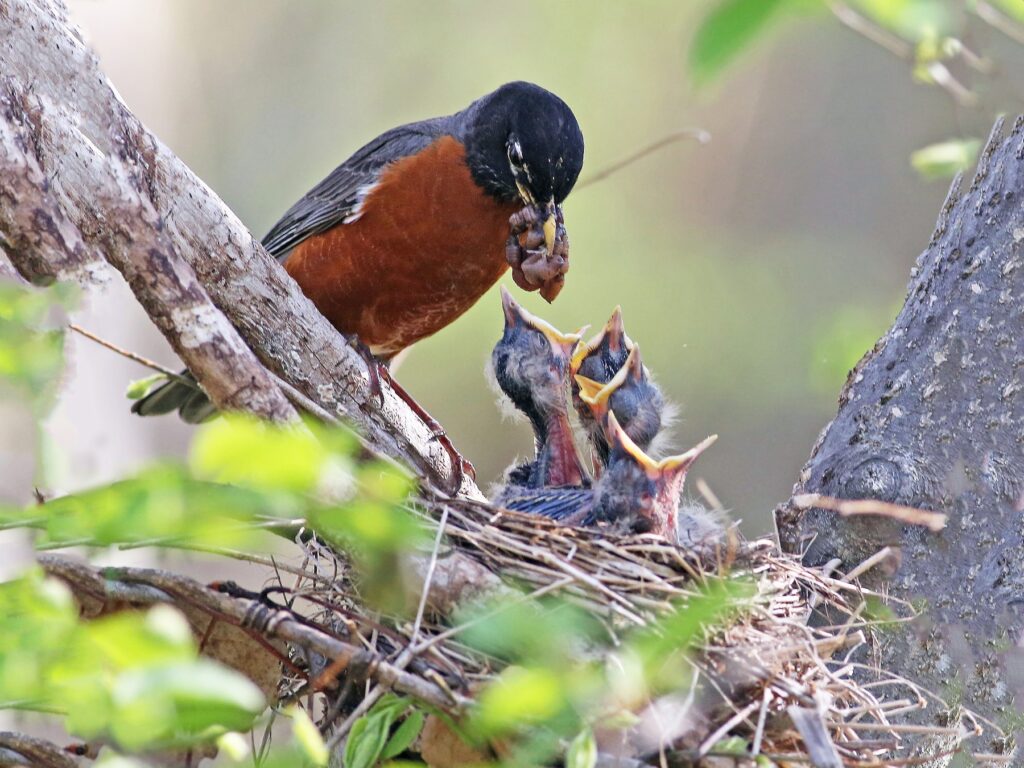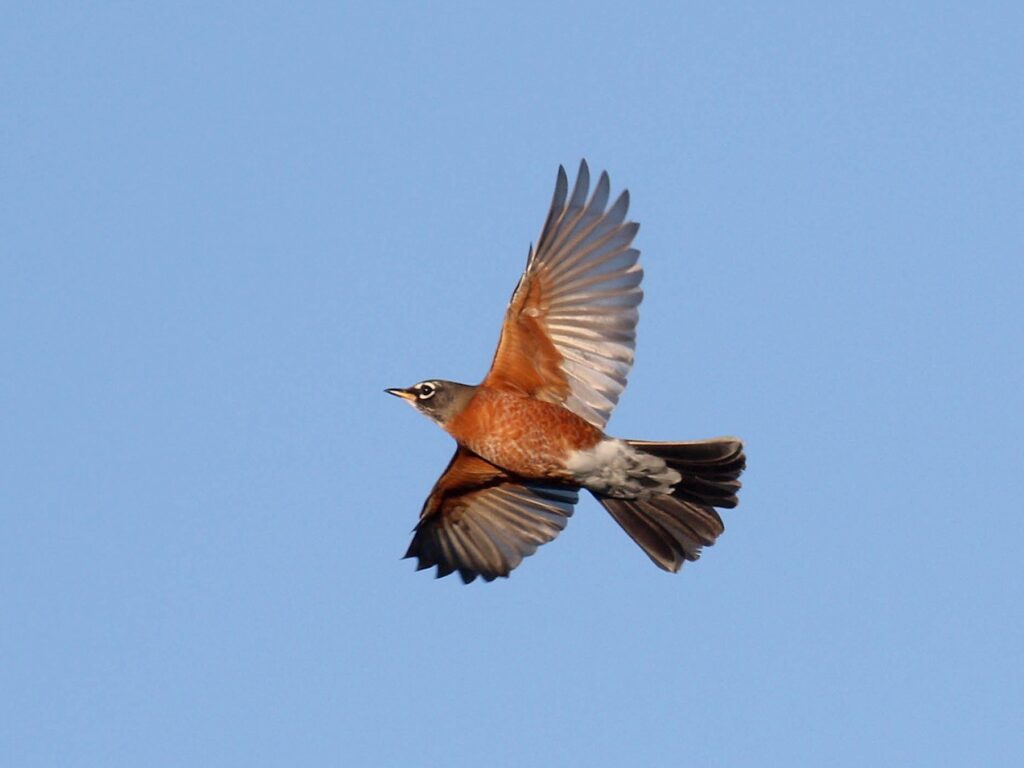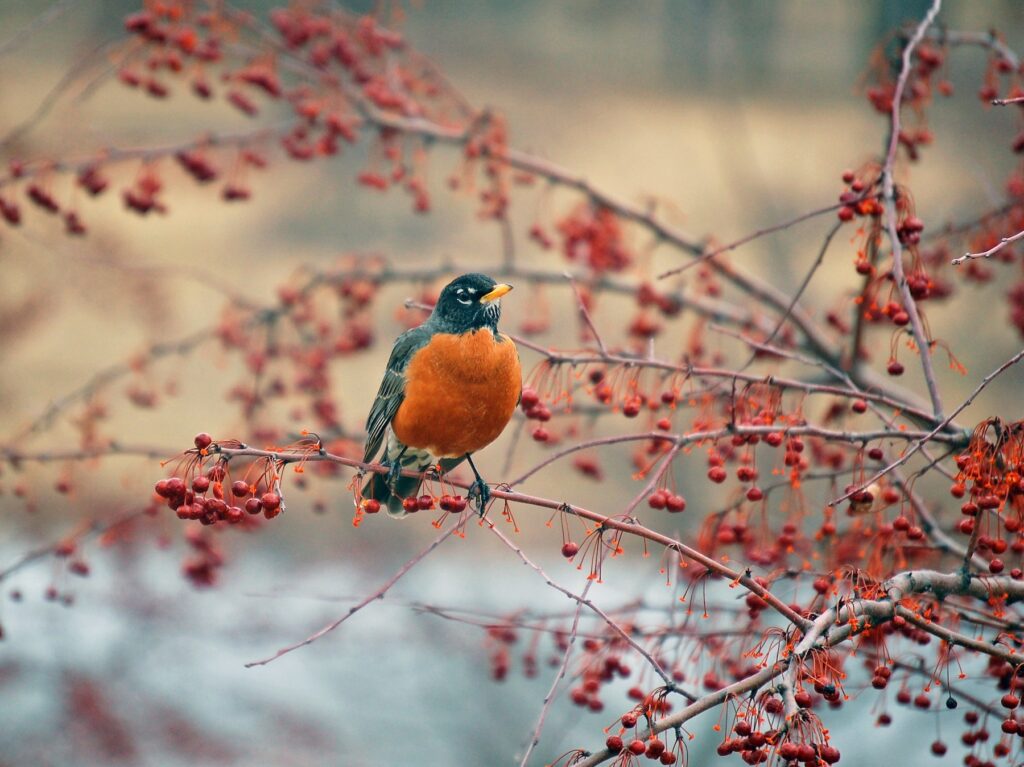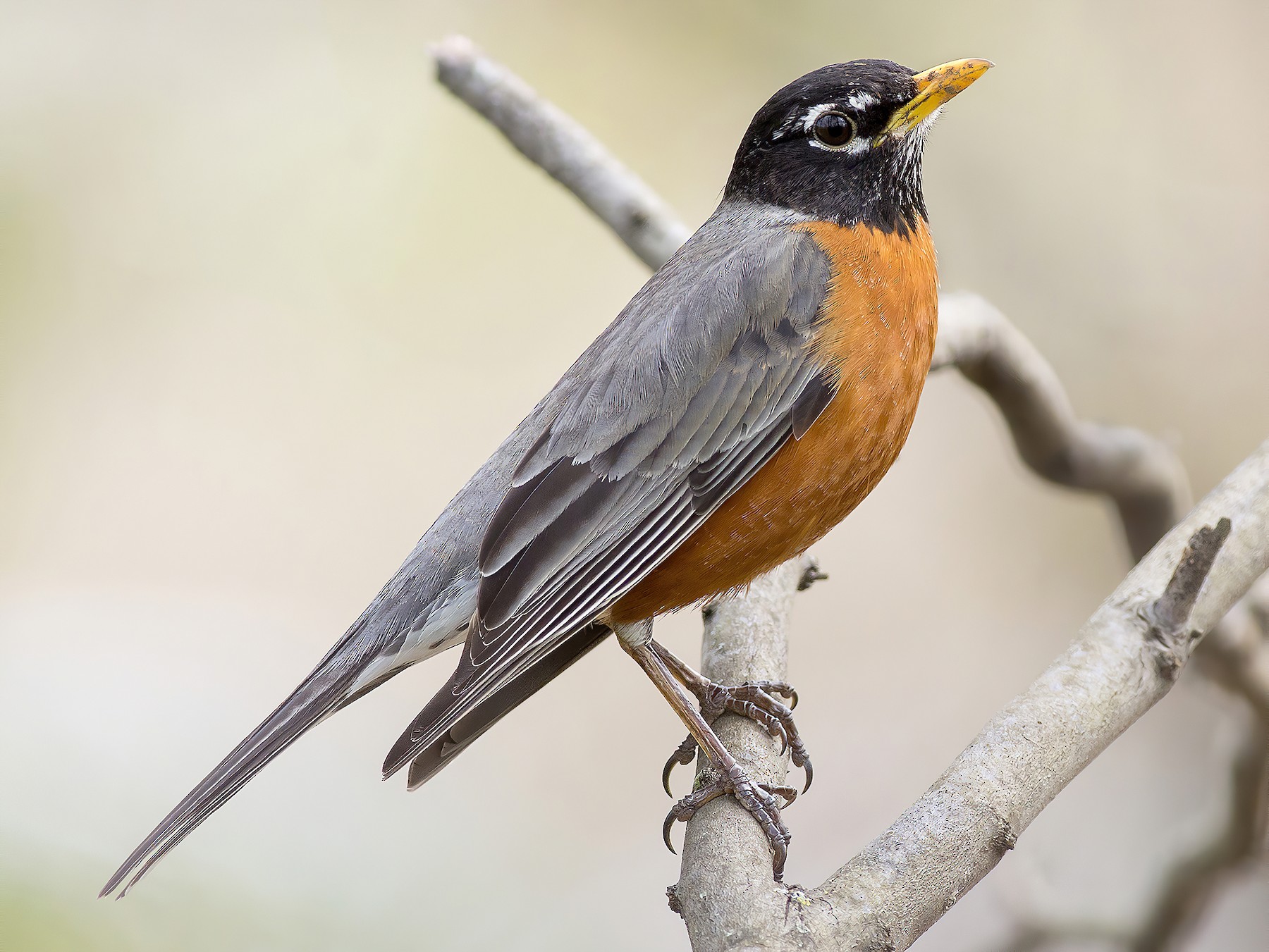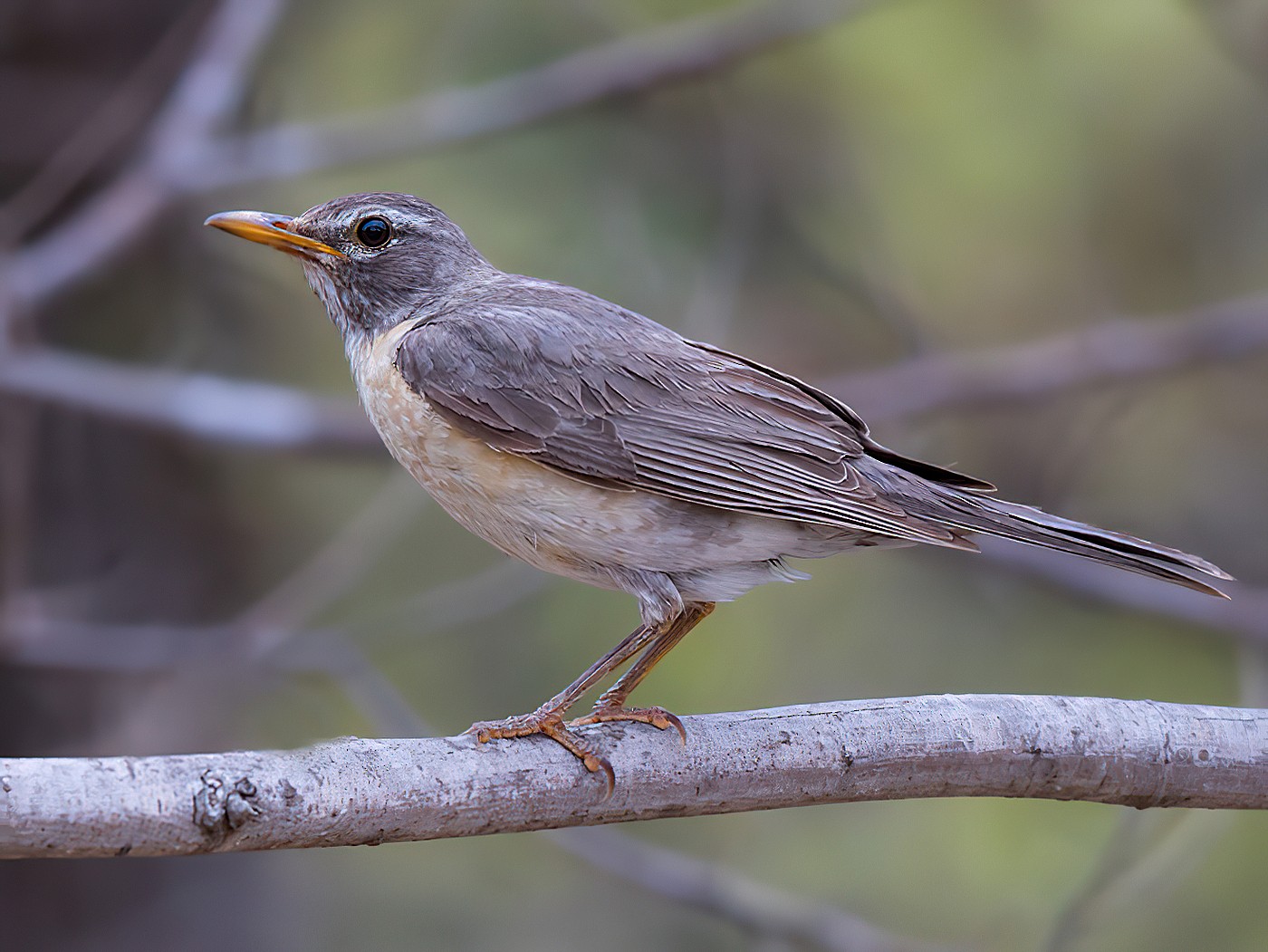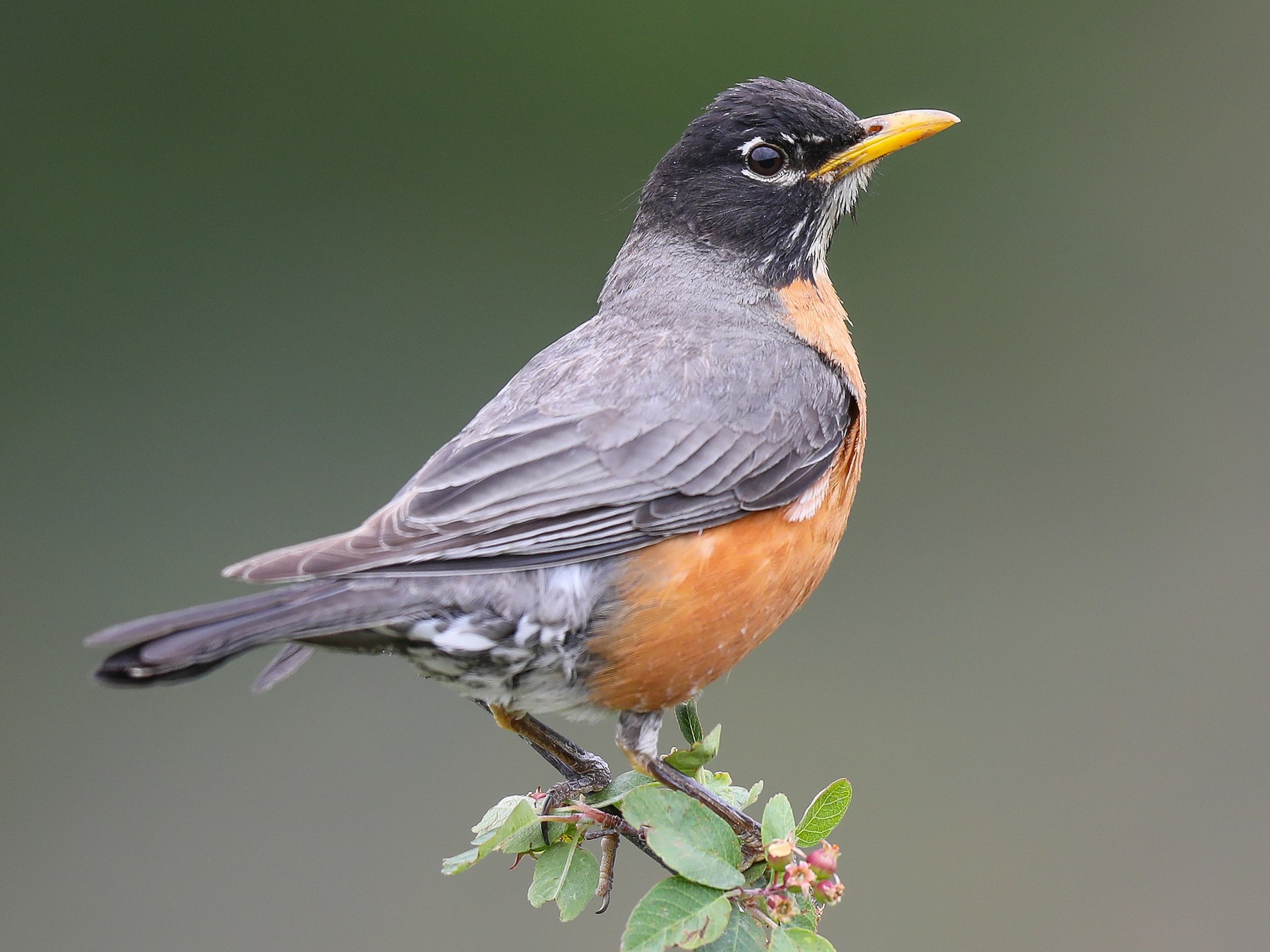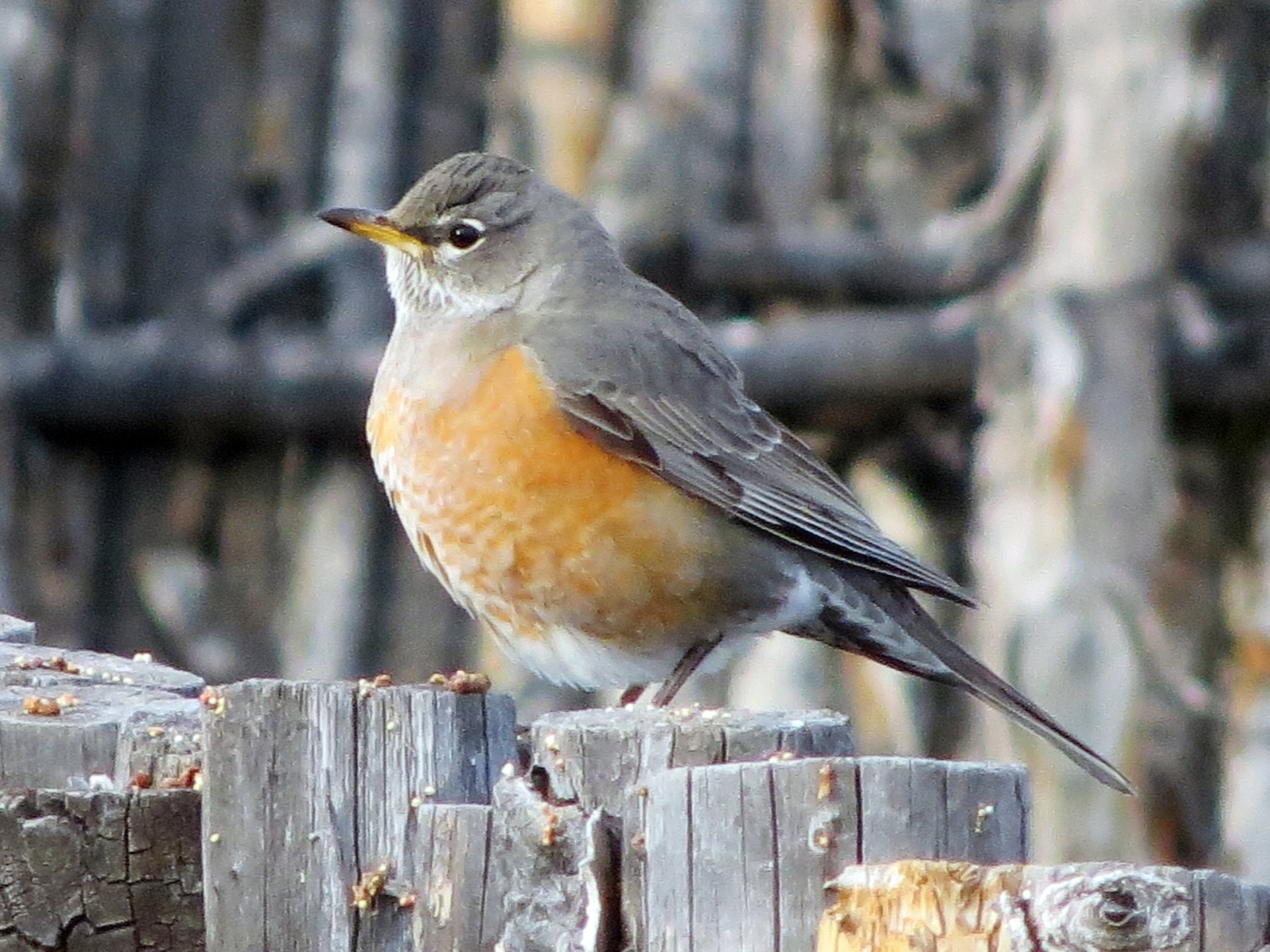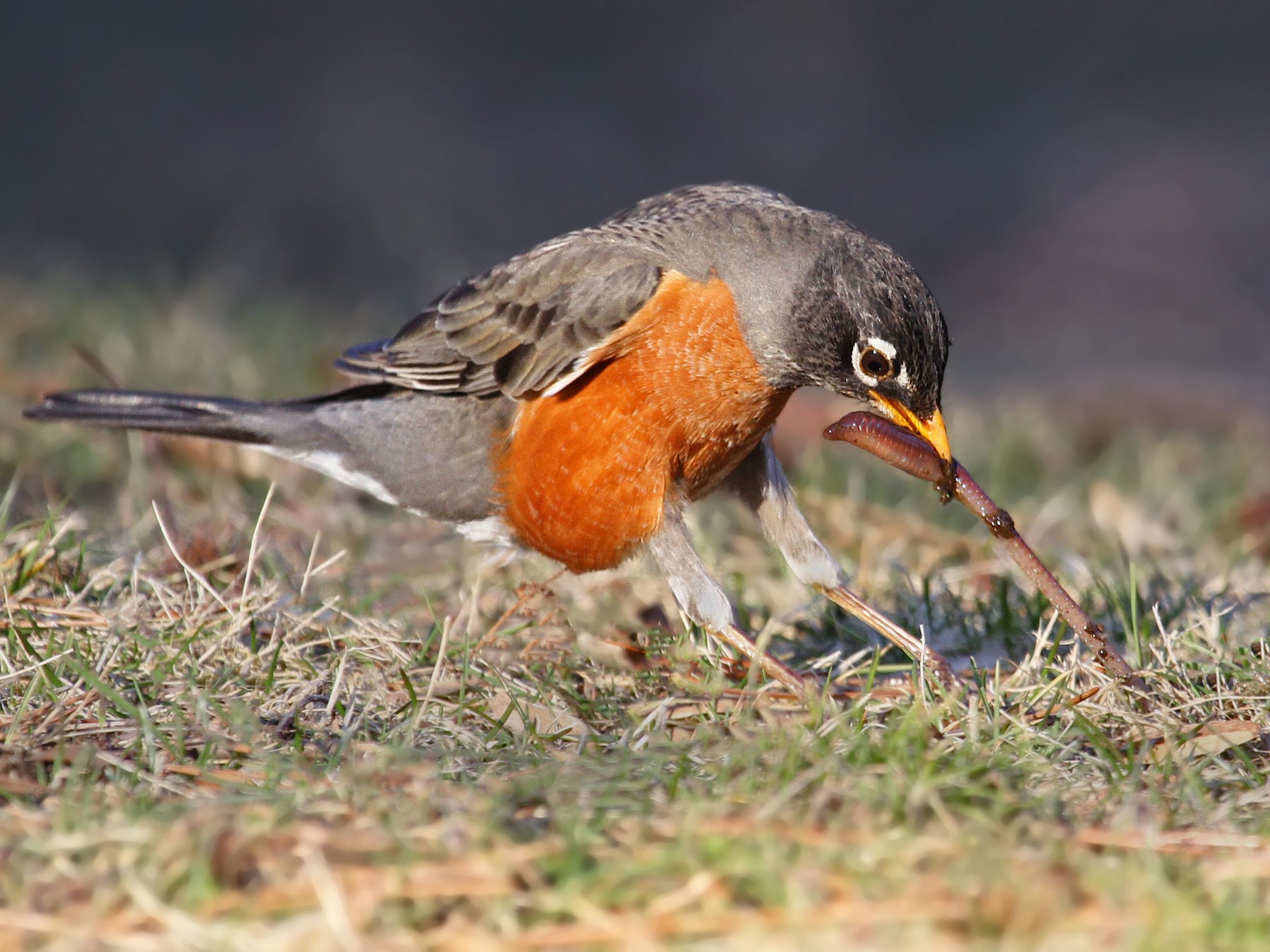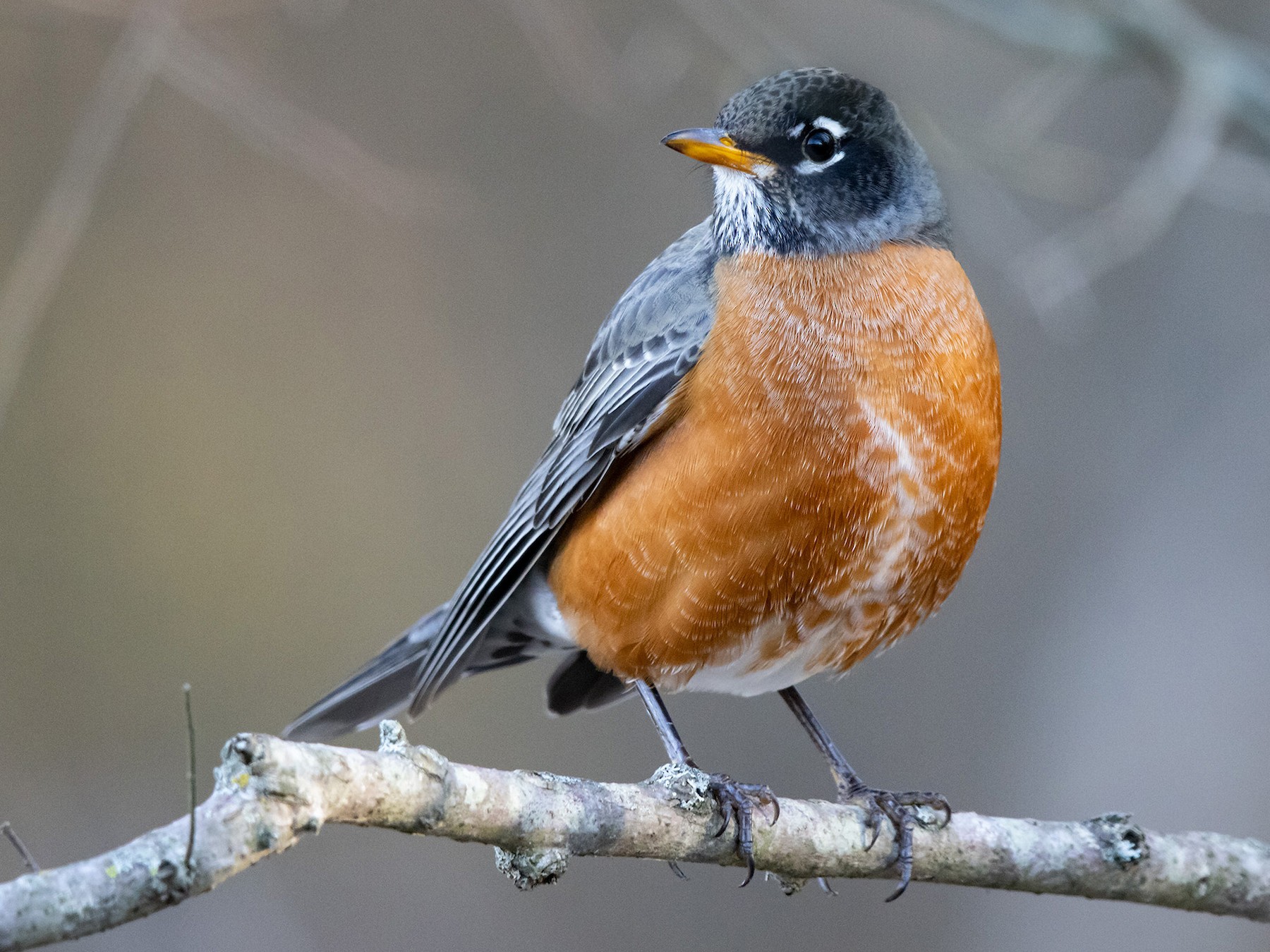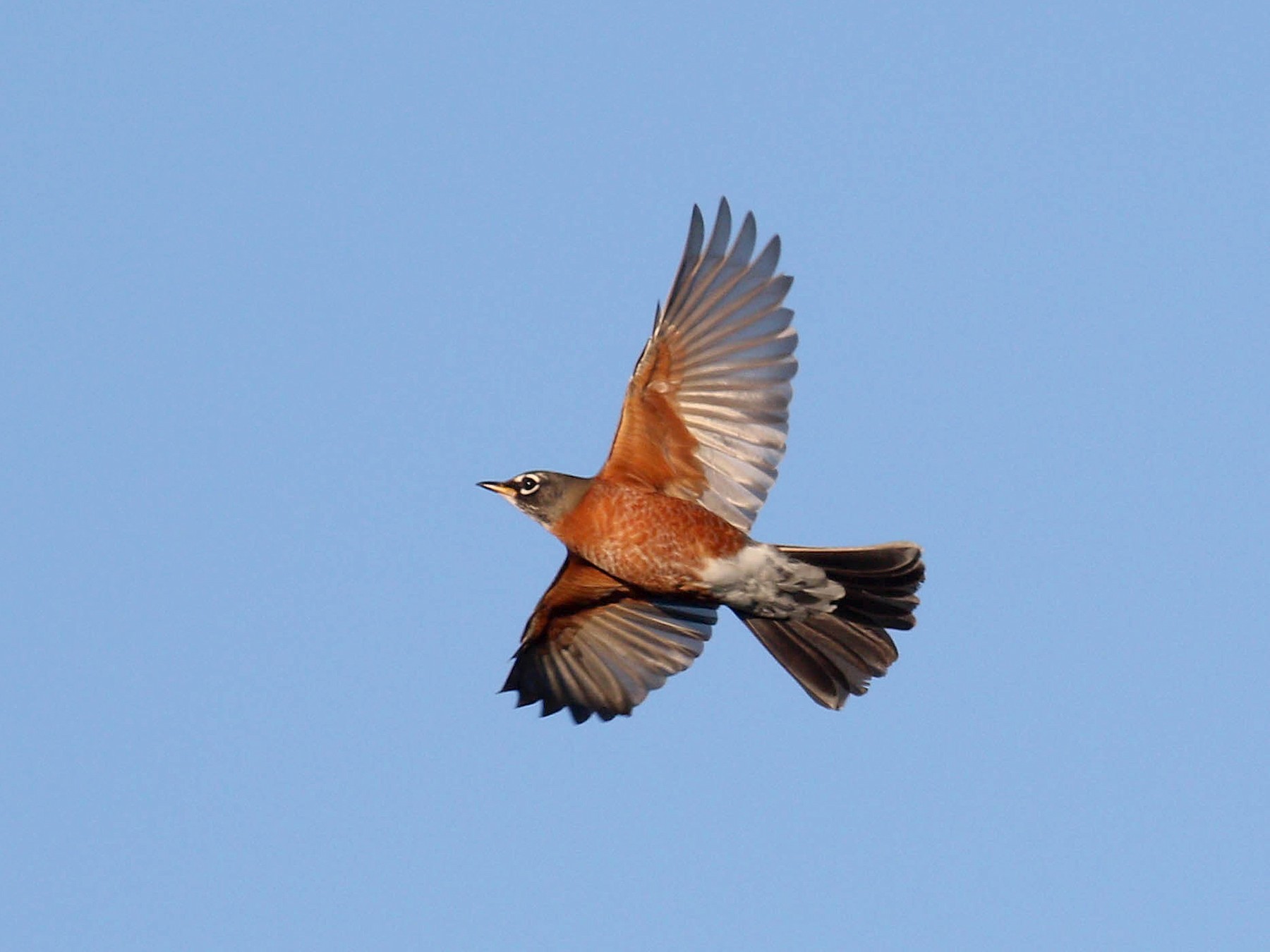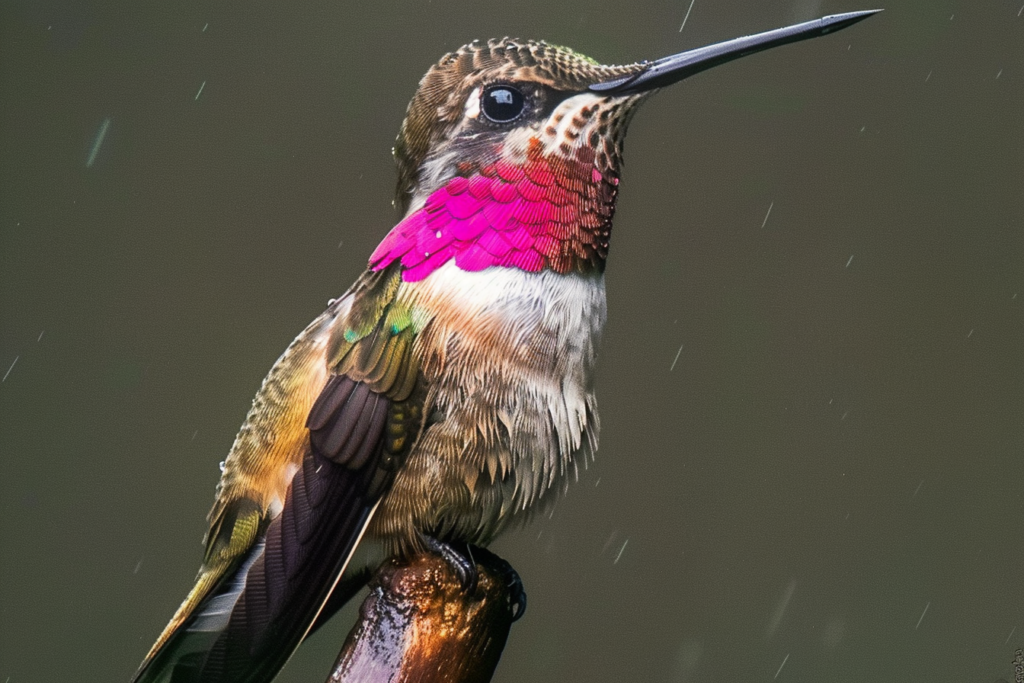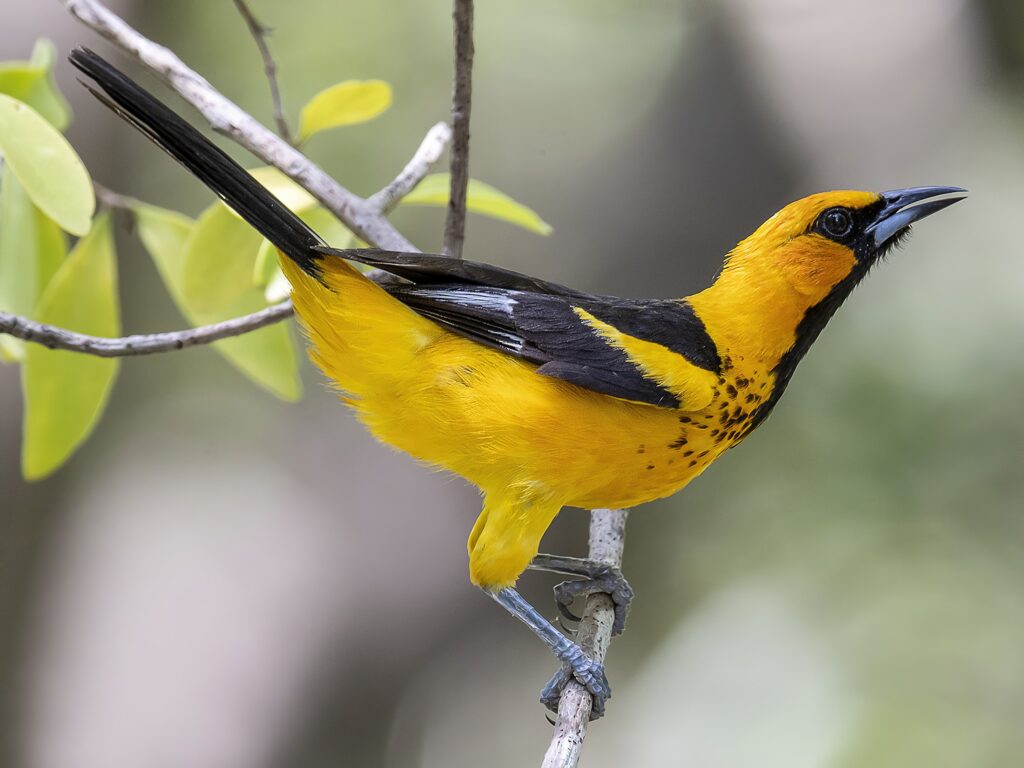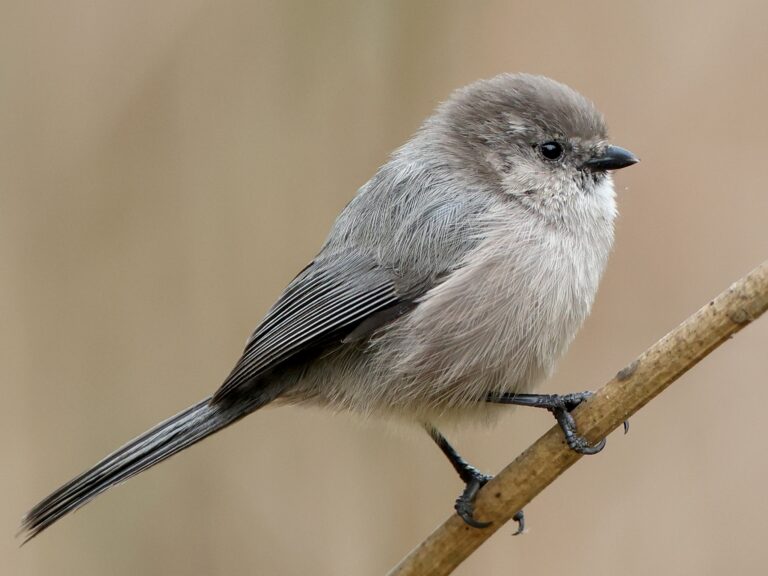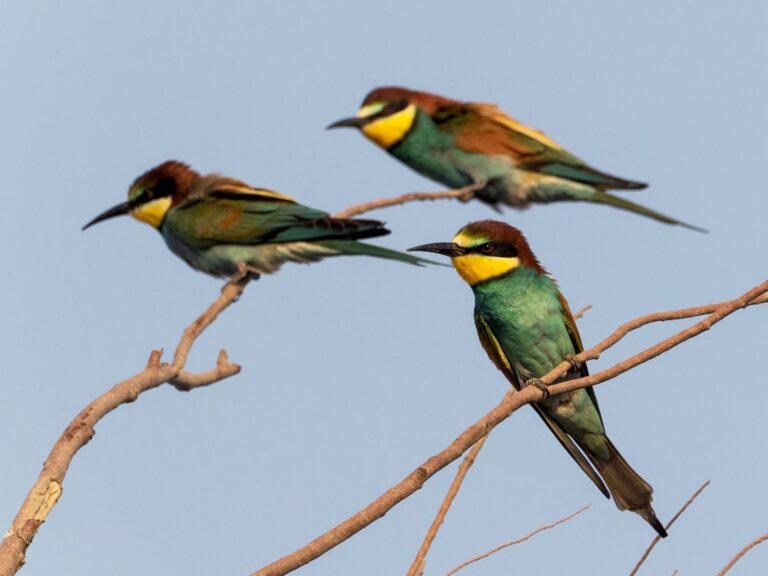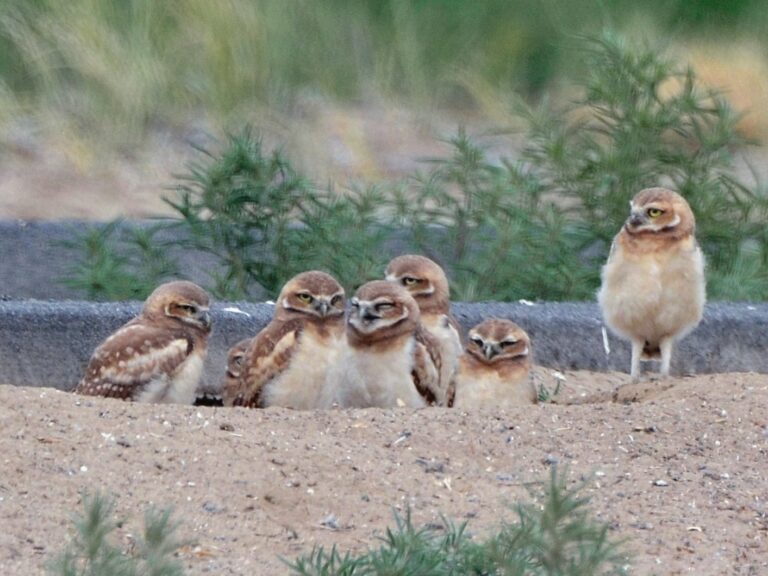American Robin: The Vibrant Songbird of North America
The American Robin is probably one of the most recognized birds in North America. Its red-orange breast and cheerful song are hard to miss.
You can spot these birds by their plump bodies, bright coloring, and melodic calls. Bird watchers and nature fans seem to adore them for these reasons. They show up in all sorts of places, from city parks to backyard gardens. It’s honestly impressive how adaptable and resilient they are.
Diet-wise, American robins mostly eat insects and fruits. You’ll often see them hopping around on the ground, searching for worms. During breeding season, they build nests in trees or shrubs. This is where they raise their young, tucked away from most dangers.
They use a range of calls to communicate. Each sound has its purpose—some attract mates, others warn about threats.
Key Takeaways
- American robins stand out with their red-orange breast and unmistakable song.
- They thrive across North America, showing up in both cities and rural spots.
- Their diet is mostly insects and fruits, and their nesting habits are pretty distinctive.
Sign Up for Our Monthly Newsletter
Every month we send out our newsletter about interesting (and sometimes quirky) things happening in the world of birding. Give it a try!
Identification and Appearance
The American Robin has some pretty distinct features. Adults and juveniles don’t look quite the same, but a few traits always give them away.
Knowing what to look for makes spotting them in the wild a lot easier. Even among other thrushes, robins stand out if you know the signs.
Physical Description
Adult robins are about 9 to 11 inches long. Their rounded body and orange or reddish breast are classic.
The rest of their feathers are mostly grayish-brown. They have broad wings, which help them zip around when searching for food or dodging predators. Their tails are medium-length and usually dark with white edges. Juveniles look a bit scruffier, with spotted breasts that help them hide.
Look for dark brown eyes and yellow-orange beaks on adults. That beak color is a dead giveaway.
Distinguishing Features
Their breast color is the main thing people notice—especially during breeding season, it’s almost glowing. You might also see them flick their tails when they land, which isn’t something all birds do.
Robins lay beautiful blue eggs, usually three to five per nest. The eggs are smooth, light blue, and pretty easy to spot if you stumble across a nest.
These little details make robins a favorite for bird lovers all over North America. If you’re curious, check out Notes on the nesting habits of the American Robin for more info.
Habitat and Distribution
American Robins are everywhere, honestly. You’ll find them all over North America, popping up in all sorts of places.
Let’s break down where they go and what kinds of spots they like best.
Range Across North America
Robins breed across most of the continent, from Canada down into Mexico. You can spot them in every U.S. state, and some states even picked them as their official bird.
They migrate with the seasons. In spring, they leave their winter homes in the southern U.S. and Mexico, heading north to breed.
They usually show up before a lot of other migratory birds. Some robins travel over 2,000 miles to reach their summer homes, which is wild when you think about it.
In fall, they gather in big flocks and move south again. They look for places with food and safe nesting spots, always adapting as things change.
Preferred Environments
Robins aren’t picky about where they live. You’ll find them in woodlands, gardens, parks, and even orchards. They do surprisingly well around people, so cities and suburbs are fair game. Open spaces make it easier for them to find food and build nests.
They go for spots with lots of food—fruits, insects, earthworms, you name it. During spring migration, you might catch them in fields or floodplains, where food’s easy to find. That flexibility is why you see robins almost everywhere, from quiet country roads to city lawns. It’s part of their charm.
Diet and Feeding Behavior
Robins eat a bit of everything, and their menu changes with the seasons. In warm months, they’re all about invertebrates. When it gets colder, they switch to fruits and berries.
Primary Food Sources
Earthworms, insects, and fruit make up most of their diet. In spring and summer, robins hunt for earthworms and insects—lots of protein for busy days.xYou’ll see them yanking worms out of the ground in grassy spots. When fall and winter roll around, they rely more on berries from mulberry, blackberry, and dogwood trees.
Those fruits give them the sugar and energy they need, especially during migration. Their ability to change up their food sources keeps them going year-round.
Want the best for your backyard friends?
Safflower seed is the best for wild birds because it’s rich in protein and healthy fats, providing excellent nutrition and energy. And, as a bonus, it attracts colorful songbirds like cardinals and chickadees.
Foraging Techniques
Robins have some clever ways of finding food. You’ll often spot them walking on the ground, watching and listening for movement.
They sometimes tilt their heads to one side, almost like they’re eavesdropping on worms underground. When they want fruit, they just pluck berries straight off the bush with those sharp beaks.This flexibility in how they find food is a big reason they’re so successful. They can switch things up depending on what’s available.
If you want to dig deeper into what they eat, check out this link on the diet of American Robins.
Breeding and Nesting
Robins follow some interesting routines when it comes to breeding and nesting. Watching them build nests and raise their young is honestly pretty fascinating.
Nesting Habits
They gather all sorts of materials—grass, twigs, mud, even animal fur—to construct their nests. You’ll usually find these bowl-shaped nests in trees, shrubs, or sometimes on ledges.
The female does most of the building and picks out the safest spot she can find. In thick vegetation, the nest is almost hidden from predators. Most nests end up about 6 to 8 inches wide. The female’s attention to detail really pays off for her chicks’ safety.
Egg Characteristics
Robins lay those famous blue eggs—people even call the color “robin’s egg blue.” Each clutch has three to five eggs, smooth and a little shiny.
The blue tint helps the eggs blend in, making them harder for predators to spot. After laying, the female incubates them for about 12 to 14 days.
Breeding Season and Cycle
Robins usually start breeding in early spring, sometimes as soon as March in warmer places. They often raise two or three broods in a single season.
Once the eggs hatch, the chicks rely on both parents for food and care. About 14 to 16 days after hatching, the young robins leave the nest and start figuring things out on their own.
For more on their breeding habits, there’s a detailed article here: breeding behavior and nesting of the eastern robin.
Vocalizations and Communication
The American Robin’s sounds are honestly one of its most charming features. Their vocalizations are vital for communication and keeping their social life running smoothly.
Song and Calls
Robins have a bunch of different sounds, mostly songs and calls. Their song is a series of melodic phrases—usually heard at dawn or during breeding season.
Each song can have three to seven phrases, and sometimes they’ll repeat them for minutes on end. Calls are shorter and more to the point, like sharp “seet” noises for alarms. They use specific calls to talk to each other about danger or food. If you’re curious about the science behind it, check out this analysis on vocal behavior.
Role in Social Behavior
Vocalizations help robins mark territory and attract mates. Males sing to tell other males to back off, especially in spring. Calls also keep flocks together while they forage. This back-and-forth is a big part of how robins stay organized and safe.
Ornithologists pay close attention to these patterns to learn more about robin behavior. For further reading, this study on American Robin calls is worth a look.
Similar Species and Comparison
The American Robin has a few lookalike cousins, like the Varied Thrush. They share some traits, but there are differences if you know where to look.
Varied Thrush
The Varied Thrush (Ixoreus naevius) looks a bit like the American Robin, but you can spot a few key differences. Instead of a bright orange-red breast, the Varied Thrush shows off a more muted chestnut color and darker, grayish feathers.
The robin usually appears more uniform, while the Varied Thrush has a pattern with streaks and spots. It’s a small detail, but once you see it, you can’t unsee it.
You’ll usually find the Varied Thrush hanging out in dense forests, especially in the Pacific Northwest. They really seem to love coniferous woods and, honestly, they’re a bit harder to spot than robins.
Their call stands out too—a strange, flute-like sound that doesn’t quite match the robin’s cheerful, melodious song. If you’re listening for birds in the wild, that call can tip you off pretty quickly.
When it comes to food, both birds eat insects and fruits, but their hunting styles are different. The Varied Thrush prefers to poke around on the forest floor, flipping leaves to find snacks.
The American Robin, on the other hand, is more likely to strut across open lawns or grassy fields, searching for worms and bugs. That difference in behavior makes them easier to tell apart when you’re out birding. For more details, you can check out this link.
Frequently Asked Questions
Let’s tackle some common questions about the American Robin. You’ll find info on telling males from females, their favorite hangouts, what they sound like, and how they compare to European Robins.
How can one distinguish between a male and female American Robin?
Males show off a bright orange-red breast and darker grayish wings and head. Females look a bit paler, with a more washed-out orange underneath.
What are defining characteristics of the American Robin’s habitat?
American Robins seem pretty adaptable—they turn up in gardens, parks, and forests. They like having trees to nest in and open ground to hunt for food.
What does the American Robin’s call sound like?
Their call is a sharp, clear “cheer-up, cheerily.” You’ll usually hear it at sunrise or late in the day—it’s kind of their signature sound.
In what ways does the song of the American Robin differ from its call?
The song’s more elaborate and melodic than the call. It’s made up of several phrases and mainly comes out during mating season, when they’re trying to impress a mate.
How does the American Robin differ from its European counterpart?
American Robins are bigger and flashier, with a brighter orange breast. Their songs and calls sound different, and while American Robins like open areas, European Robins stick to dense vegetation.
What are some interesting and lesser-known facts about the American Robin?
Did you know American Robins can eat up to 14 feet of earthworms in just one day? That’s a lot of digging and pecking around the yard.
They don’t just stick to worms, though. Their diet includes plenty of fruits and berries, so they end up spreading seeds as they go about their day.


